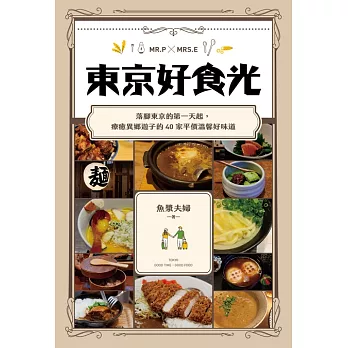參考服務是圖書館重要的讀者服務之一,美國圖書館學會下的參考與讀者服務學會(Reference and User Services Association, RUSA)認為參考業務包含參考諮詢服務(reference transaction)和其他涉及資訊或研究相關資源、工具,及服務之創建、管理,及評鑑的行動,並進一步說明:(一) 參考諮詢服務乃是由館員推薦、解讀、評估,以及使用資訊資源,以協助讀者滿足特定資訊需求的資訊諮詢工作。(二) 所謂資訊資源的創建與管理包含研究館藏、研究指引、書目、資料庫、網站、搜尋引擎的發展與維運,讓使用者得以自主使用滿足其資訊需求;而評鑑則包含參考工具書、資源與服務的衡量與評估(Reference and User Services Association [RUSA], 2008)。
《圖書館與資訊科學專業詞典(ALA Glossary of Library and Information Science)》中定義參考館員(reference librarian)為「任職於參考部門負責提供資訊服務與參考服務的館員」(Levine-Clark, 2013),在此所謂的資訊服務乃由館員提供給使用者的資訊或研究協助,包含了參考諮詢服務和指示型資訊服務(directional transaction)。而早在1930年代,Shores(1937, as cited in Rabner & Lorimer, 2002)便提出參考館員工作的分類,包含 (一) 答覆讀者有關社區相關和事實型的問題;(二) 查找讀者需要的館藏;(三) 協助研究工作,如編製參考書目、學科領域文獻的摘要與總整;(四) 正式或非正式的教學工作;(五) 讀者諮詢服務。
大學圖書館的主要使命為以師生為主要服務對象,運用各類型館藏與專業服務支援學術研究、教學、推廣服務,因此參考服務勢必與校內的學術教學、學習、研究相結合,甚至蛻變為學科服務(subject service),近年來陸續有學科館員(subject specialist or subject librarian)、學科聯繫館員(liaison librarian)、嵌入式館員(embedded librarian)等學科服務相關職稱出現,而參考館員、學科館員、學科聯繫館員、嵌入式館員間的工作又有重疊。
《圖書館與資訊科學專業詞典》中定義學科聯繫館員為「在學術圖書館中與特定系所或學術單位共事,進行館藏發展和圖書館教育的館員」(Levine-Clark, 2013)。
筆者運用SCOPUS資料庫所收錄的文獻探索大學圖書館「學科服務」於2010年-2020年間的研究趨勢,從中解析學科館員、學科聯繫館員、嵌入式館員的異同之處與各自的發展重點。整體歸納如下:
Abrizah, A., Inuwa, S.,
& Afiqah-Izzati, N. (2016). Systematic literature review informing LIS
professionals on embedding librarianship roles. The Journal of Academic Librarianship,
42(6), 636-643.
American Library
Association. Committee on Library Terminology (1943). ALA glossary of library
terms, with a selection of terms in related fields. Chicago: American Library
Association.
American Library
Association (2009). ALA’s core
competences of librarianship. Retrieved from
http://www.ala.org/educationcareers/sites/ala.org.educationcareers/files/content/careers/corecomp/corecompetences/finalcorecompstat09.pdf.
Auckland, M. (2012). Re-skilling for research: An
investigation into the role and skills of subject and liaison librarians
required to effectively support the evolving information needs of researchers.
Research Libraries UK. Retrieved from http://www.rluk.ac.uk/wp-content/uploads/2014/02/RLUK-Re-skilling.pdf.
Brown, S., Alvey, E., Danilova, E., Morgan, H.,
& Thomas, A. (2018). Evolution of research support services at an academic
library: specialist knowledge linked by core infrastructure. New Review of
Academic Librarianship, 24(3-4), 337-348.
Cassell, K. A. &
Hiremath, U. (2004). Refernce and information
services in the 21st century: An introduction. 2nd
Edition. New York: Neal-Schuman Publishers, Inc.
Cassidy, E. D., & Hendrickson, K. E. (2013).
Faculty–librarian micro-level collaboration in an online graduate history
course. The journal of academic librarianship, 39(6), 458-463.
Crawford, A. (Ed.)(2012a). New Directions for
Academic Liaison Librarians. In Chandos Information Professional Series, Chandos
Publishing.
Crawford, A. (2012b). Introduction. In Crawford, A.
(Ed.)(2012). New Directions for Academic Liaison Librarians. In Chandos
Information Professional Series, Chandos Publishing.
Dawson, A. , & de la Pena McCook, K. (1996).
Trends affecting the roles of reference librarians. The Reference Librarian ,
25 (54), 53–94.
Goetsch, L. A. (2008). Reinventing our work: New
and emerging roles for academic librarians. Journal of Library Administration ,
48 (2), 157–172.
Green, S. S. (1876). Personal relations between
librarians and readers. Library journal, 1(2), 74-81.
Hoffman, S. (2018). Effective embedding: Working with
academic departments and online courses. In Collaboration and the Academic
Library (pp. 85-96). Chandos Publishing.
James, S. (2002). Digital reference: reference librarians’
experiences and attitudes. Journal of the American Society for Information
Science and Technology, 53(7), 549-566.
Johnson, A. M. (2020). Reference and Liaison Librarians:
Endangered Species or “Vital Partners?” Views of Academic Library
Administrators. Journal of Library Administration, 60(7), 784-799.
Ke, H. R. (2016). Fusion of Library, Archive, Museum, Publisher
(LAMP): the NTNU Library Experience. Journal of Information Science Theory and
Practice, 4(2), 66-74. Retrieved from https://doi.org/10.1633/JISTaP.2016.4.2.5.
Levine-Clark, M., Carter, T. M., Bartlett, J. A., Cagna, R.,
Macke, S., Reichardt, C. A., & Vyhnanek, K. (2013). ALA glossary of library
and information science. 4th Edition. Chicago:
American Library Association.
Lang, L., Wilson, T., Wilson, K., & Kirkpatrick, A. (2018).
Research support at the crossroads: capability, capacity, and collaboration.
New Review of Academic Librarianship, 24(3-4), 326-336.
Martin,
J. V. (1996). Subject specialization in British university libraries: a second
survey. Journal of Librarianship and Information Science, 28(3), 159-169.
Nielsen, B. (1982). Teacher or intermediary: Alternative
professional models in the information age. College & Research Libraries ,
43 (3), 183–191.
Oboler, E. M. (1964). The last word on automation? Good-bye,
reference librarians! Reference & User Services Quarterly, 4(1), 12-13.
Pati, B., & Majhi, S. (2019). Pragmatic implications of
embedded librarianship in academics: a review of eminent literatures. Library
Hi Tech News.
Pinfield, S. (2001). The changing role of subject librarians in
academic libraries. Journal of librarianship and information science, 33(1),
32-38.
Rabner, L. & Lorimer, S. (2002). Definition of reference
service: A chronological bibliography. Retrieved from http://www.ala.org/rusa/sites/ala.org.rusa/files/content/sections/rss/rsssection/rsscomm/evaluationofref/refdefbibrev.pdf.
Reference and User Services Association (2008).
Definitions of reference. Retrieved from http://www.ala.org/rusa/guidelines/definitionsreference.
Sharma, P., Kumar, K., & Babbar, P. (2014).
Embedded librarianship: Librarian faculty collaboration. DESIDOC Journal of
Library & Information Technology, 34(6).
Shera, J. (1964). Automation and the reference
librarian. Reference & User Services Quarterly, 3(6), 3-7.
Shores (1937). Basic
reference books: An introduction to the evaluation, study, and use of reference
materials with special emphasis on some 200 titles. Chicago: American
Library Association.
Wayne State University Library System (2020). Toolkit for librarian liaisons: How to be a
subject resource specialist. Retrieved from
https://guides.lib.wayne.edu/LiaisonToolkit.
林呈潢(2011)。圖書館專業人員認證研究。臺北市:國家圖書館。
蘇小鳳(2005)。即時數位參考諮詢服務。臺北市:文華。














































